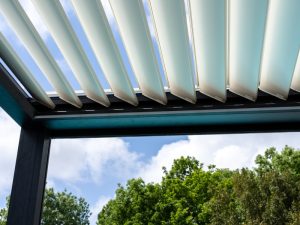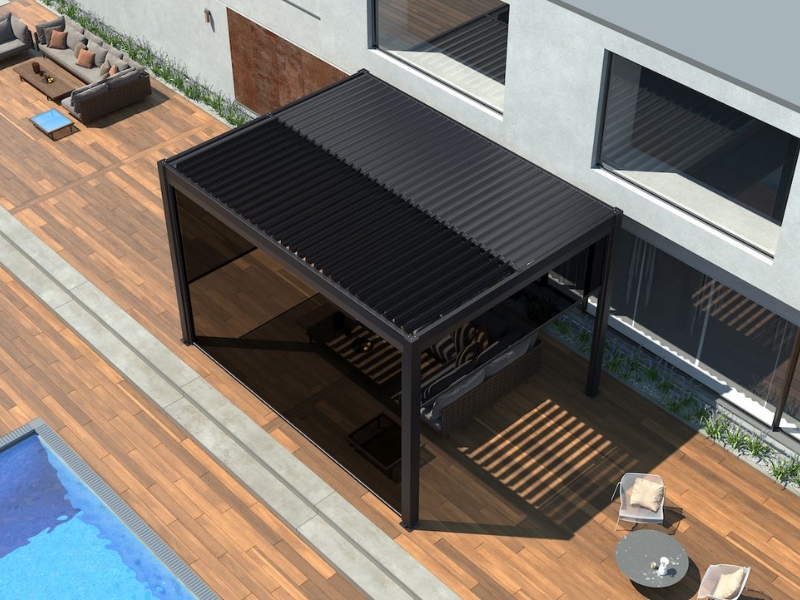Selecting the right pergola sizes goes beyond appearance — it shapes how your outdoor space functions. Too small, and it feels cramped. Too large, and you lose intimacy or blow your budget. Pergola size affects shade coverage, layout flexibility, and long-term comfort. Getting the dimensions right ensures your backyard feels balanced and inviting. This article explores the common problems of incorrect sizing and shows how to measure for the best fit.
Why do incorrect pergola sizes cause usability issues?
A poorly sized pergola can make even a beautiful outdoor area frustrating to use. When the scale is off, it compromises both the aesthetic appeal and practicality of your space. Here’s why pergola usability takes a hit with incorrect sizing:
- Oversized pergolas dominate small spaces, making them feel cluttered or closed in
- Undersized structures don’t offer enough functional space for furniture, movement, or entertaining
- Odd proportions disrupt flow, leaving awkward gaps or traffic issues
- Shade fall misses key areas, creating discomfort at peak sun hours
Even if the materials are top-notch, function comes first. Misjudging size throws off everything from comfort to furniture placement. It’s not just about metres — it’s about fit.
What problems arise when pergola sizes don’t match the space?
Misaligned pergola sizes can turn a dream design into a logistical mess. You might have a generous backyard or a cosy courtyard — either way, ignoring spatial harmony leads to frustration. Common issues from mismatched pergola sizes include:
- Clashing with fixed features, like garden beds, retaining walls, or pool zones
- Reducing usable lawn or hardscape areas by extending too far
- Blocking natural light from entering indoor spaces when placed too close to windows
- Interrupting visual symmetry, which affects curb appeal and resale value
These setbacks often result in costly redesigns or removals. It’s smarter to align your pergola size with the layout and surroundings from day one. If you’re planning a new installation, it helps to understand how to avoid common sizing mistakes in pergola design so you can adjust your layout before materials are ordered.

How can improper pergola sizes limit shade coverage?
The main job of a pergola is to provide shade, and when the size is wrong, that function fails. Shade zones should match the usage areas, such as seating, dining, or poolside spots. However, without proper planning, pergola shade often ends up in the wrong place. Issues that arise when pergola shade doesn’t align include:
- Harsh sun exposure during mid-morning or late afternoon hours
- Inconsistent coverage throughout the day, leaving users chasing shade
- Furniture fades and material damage from overexposure
- Reduced comfort, leading to underused outdoor spaces
Different pergola sizes change how shade behaves based on time of day, direction, and slat orientation. If shade’s your goal, start with measurements — not just aesthetics. You’ll also want to review the guidelines for determining if building approval is required for pergolas to avoid regulatory snags.
Which pergola sizes offer the most flexible use?
Some pergola sizes strike a better balance between shade, airflow, and adaptability. Standardised dimensions help avoid installation problems and support more customisation later. The sweet spot often depends on what you’re planning to use the space for. These sizes tend to deliver the most flexibility:
Here’s a quick reference to help match pergola sizes with typical outdoor setups:
Pergola Size | Suitable For | Notes |
3x3 metres | Small courtyards, garden corners | Minimalist setups, bistro tables, plants |
4x4 metres | Mid-sized patios, family sitting areas | Good for 4–6 people with moderate furniture |
6x4 metres | Large decks, alfresco zones | Ideal for outdoor dining and BBQ areas |
Custom sizing | Unique layouts or sloped blocks | Tailored to space constraints and goals |
The right size can adapt as your needs change, from small gatherings to family BBQs. Focusing on layout and use cases — not just aesthetics — provides a long-term solution that evolves with your lifestyle.
How do you measure for the right pergola size?
Getting the size right starts with measuring properly, not just eyeballing a space. Taking shortcuts here can lead to expensive mistakes and awkward installations. Your site needs to be assessed for width, height, and functional flow. To get accurate measurements:
- Measure from fixed structures, like walls or fences, not just empty space
- Account for ground-level changes, especially for sloped or uneven terrain
- Leave buffer zones around furniture and walkways
- Visualise movement and flow, especially for frequently entertaining areas
You’ll also want to consider sun angles, wind exposure, and gutter heights for attached designs. Smart planning now saves you major headaches down the track.
Can small pergola sizes still be functional?
Absolutely — size doesn’t always equal effectiveness. Small pergolas can still deliver big value when they’re well-positioned and thoughtfully designed. It’s all about intent. Small pergolas can still serve a purpose if you:
- Use vertical elements, like climbers or lattice, to increase shade without bulk
- Select streamlined furniture that complements smaller footprints
- Create dedicated zones, like a morning coffee nook or compact yoga spot
- Layer lighting and accessories to enhance mood and functionality
Even narrow spaces like side yards or balcony corners can benefit from pergola cover. You’ll see this in the many ways basic pergola designs enhance outdoor spaces, especially when design choices are intentional and tied to your lifestyle.

What pergola size works best for your specific layout?
Matching a pergola size to your space isn’t a one-size-fits-all approach. It depends on lifestyle, architecture, and how you want to use the area. Whether it’s a wraparound patio or a garden retreat, scale and proportion should guide the decision. To tailor the size to your layout, consider:
- How often do you host, and how many guests does the space need to accommodate
- The size of your existing furniture and any future plans
- Distance from the house, which affects lighting and material choice
- Orientation to the sun, to optimise comfort year-round
If you’re unsure what suits your yard, it helps to start by exploring pergola sizes that enhance outdoor living spaces. This enables you to compare layout fit with functional goals before the build begins.
Final thoughts
Choosing the right pergola size means balancing shade, comfort, and usability with space limitations and aesthetic goals. When done well, it transforms outdoor zones into everyday favourites — whether that’s for entertaining, relaxing, or simply reading a book in the arvo. For tailored advice or to plan a new build, start by having a talk with the team at Unique Pergolas about your backyard needs.


